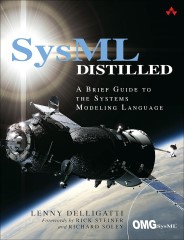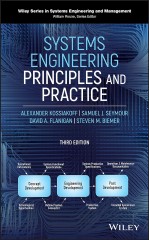Systems Engineering is a multidisciplinary approach, aiming to design, integrate and manage complex systems over their lifecycle. It ensures all aspects of a system are considered and integrated resulting in smoother operational functionality and efficiency. The discipline embraces a holistic view, uniting the technical, physical and human elements, while also focussing on a complete life-cycle perspective. Systems Engineering not only considers the end customer’s needs but also takes into account the overall business and operative environment.
Table of Contents
- How does Systems Engineering work?
- The Scope of Systems Engineering
- Industries Utilizing Systems Engineering
- Case Study: Systems Engineering in the International Space Station (ISS)
- User-Centric Perspectives
- The Comprehensive Benefits of Systems Engineering
- System Integration
- Risk Management
- Latest Trends and Future Outlook:
- Frequently Asked Questions
- What is the purpose of Systems Engineering?
- What are the principal tasks of a Systems Engineer?
- Why is risk management vital in Systems Engineering?
- What standards are commonly followed in Systems Engineering?
- What are the benefits of Systems Engineering?
- What skills are required in Systems Engineering?
- What roles can a Systems Engineer take on?
- What industries benefit from Systems Engineering?
- How does Systems Engineering contribute to innovation?
How does Systems Engineering work?
Imagine a world where complex networks like city infrastructures, global supply chains, and even space stations operate with seamless precision and efficiency. This isn’t just an ideal; it’s the goal of Systems Engineering—a dynamic and multidisciplinary field that orchestrates the design, integration, and management of complex systems throughout their life cycles. By considering every facet of a system—from the technical intricacies to the human interactions—Systems Engineering ensures that all components work harmoniously to enhance functionality and efficiency.
At its core, Systems Engineering adopts a comprehensive view, melding the technical, physical, and human aspects to craft systems that not only meet but exceed user expectations. It extends beyond mere operational needs, embedding itself in the broader business and environmental context. This holistic approach ensures that every stage of the system’s life cycle, from inception through to decommissioning, is optimized to respond to the evolving demands of users and stakeholders alike.
In every sense, Systems Engineering is about envisioning the whole picture as well as the tiny details, creating solutions that bring about revolutionary impacts on both micro and macro scales. Let’s dive deeper into how this discipline shapes our world, ensuring that every system operates at its ultimate potential.
The Scope of Systems Engineering
Systems Engineering is a broad domain that essentially involves a logical sequence of activities that helps to supersede complex system challenges.
System Requirements Definition
This is the genesis of any system engineering activity where the needs of customers or end-users are formally documented. These typically cater to functional, non-functional, or performance-related needs. Effective requirement gathering is crucial as they form the foundation for design solutions and systems testing later on in the cycle. These requirements may evolve over time and should be regularly reviewed and updated.
System Design
This involves conceptualising solutions to fulfil defined requirements. The system’s spiral lifecycle is navigated from concept, design, implementation, integration, operation to even decommissioning. Further, aspects like risk management, resilience, feasibility, and change propagation are considered. The end-goal is a robust architecture that signifies a system’s interaction with its environment and constituent parts.
System Integration
This phase aligns the components and subsystems to function as a singular entity, promoting operational efficiency. It’s in this phase that different elements are brought together to ensure they interact and correlate effectively. A well-integrated system enhances cooperation and compatibility, thus ensuring that the overall system meets defined requirements.
System Verification
A crucial phase, verification ensures that each prototype, model and subsystem built along the design phase abides by the assigned requirements. This typically involves analysis, review, inspection, and testing routines, indispensable to maintaining system integrity.
System Validation
This step ensures the system that has been built is actually what the user needs. It assesses if the system, as a whole, conforms to the user’s needs and if it operates well within its environment. User acceptance testing is one of the common validating methods applied in this phase.
Risk Management
An inherent aspect of Systems Engineering lifecycle, risk management, identifies potential system risks and implements strategies to mitigate them. It enables better decision-making processes, producing cost-effective solutions. It foresees failures, vulnerabilities, and threats and takes precautionary action to manage the system better.
Standards and Best Practices
Adhering to standards is crucial in Systems Engineering. Some commonly followed standards include the ISO/IEC 15288 for system life cycle processes and the INCOSE’s Systems Engineering handbook. They provide a framework for development activities, allowing engineers to build systems that are robust, resilient, and reliable.
Decision Management and Trade-Off Analysis
Systems Engineering uses robust decision-making tools to evaluate multiple feasible solutions and adopting the most optimal ones that balance system constraints and stakeholder requirements. This involves trade-off analysis, where different solutions are assessed for benefits, risks and system impact.
The Benefits of Systems Engineering
Successful implementation of Systems Engineering could lead to more cost-effective processes, improved system quality and reliability, better project management, and ultimately increased customer satisfaction.
Industries Utilizing Systems Engineering
Systems Engineering is applied across various industries, each benefiting from its unique methodologies and approaches. Below is a detailed table outlining the industries, forms of Systems Engineering used, associated benefits, and steps to explore these benefits:
| Industry | Forms of Systems Engineering Used and Benefits |
|---|---|
| Aerospace | Systems Integration: Ensures seamless operation of complex aerospace systems, leading to enhanced safety, reliability, and efficiency. Risk Management: Identifies and mitigates potential risks in aerospace projects, safeguarding against failures and ensuring system integrity. |
| Automotive | System Requirements Definition: Defines and prioritizes user requirements, leading to improved quality, innovation, and user satisfaction. Decision Management: Facilitates informed decision-making in automotive projects, resulting in optimized designs and enhanced product performance. |
| Healthcare | System Design: Tailors healthcare systems to meet clinical needs, leading to increased patient safety, reliability, and effectiveness. Validation: Rigorously tests healthcare systems to ensure compliance with regulatory standards and quality assurance, fostering trust and confidence among users. |
| Energy | Standards Compliance: Ensures energy systems meet industry standards and regulatory requirements, leading to enhanced sustainability and reliability. Risk Management: Identifies and mitigates potential risks in energy projects, minimizing downtime and maximizing operational efficiency. |
| Telecommunications | System Verification: Verifies the functionality of telecommunication systems, ensuring improved network performance and reliability. System Integration: Integrates telecommunication subsystems seamlessly, resulting in enhanced communication and interoperability. |
| Transportation | Decision Management: Facilitates strategic decision-making in transportation projects, optimizing routes and schedules for increased efficiency. Interoperability: Ensures transportation systems can interact and operate efficiently with other systems, reducing congestion and delays. |
| Manufacturing | System Validation: Validates manufacturing systems to ensure they meet quality standards and regulatory requirements, minimizing defects and ensuring product consistency. Predictive Maintenance: Implements predictive maintenance strategies to minimize downtime and maximize productivity, resulting in cost savings and increased uptime. |
| Defense | Risk Management: Identifies and mitigates potential risks in defense projects, ensuring mission success and personnel safety. Enhanced Security Protocols: Develops robust security protocols to protect defense systems from cyber threats and unauthorized access. |
| Construction | System Flexibility and Scalability: Designs construction systems with flexibility and scalability in mind, enabling adaptation to changing project requirements and future expansions. Improved Project Management: Facilitates effective project management, leading to reduced delays, cost savings, and improved stakeholder satisfaction. |
| Finance | Better Project Management: Enhances project management in finance-related systems, ensuring efficient resource allocation, risk mitigation, and compliance with regulatory standards. Standards Compliance: Ensures finance systems adhere to industry standards and regulatory requirements, promoting transparency, reliability, and trust. |
Finance and Systems Engineering?
While it might be surprising to some, the finance industry heavily relies on Systems Engineering to ensure efficient operations, risk management, and compliance with regulatory standards. In today’s digital age, financial institutions handle vast amounts of data and transactions, making the implementation of robust systems crucial for their success. Systems Engineering plays a pivotal role in designing, integrating, and managing these complex systems, leading to improved performance, security, and customer satisfaction.
Systems Engineering transforms finance with algorithmic trading, revolutionizing trading strategies and driving profits. According to the International Organization of Securities Commissions (IOSCO), algorithmic trading dominates global markets, underlining the necessity for robust systems. Additionally, Systems Engineering fortifies risk management, reducing financial volatility and enhancing resilience, as evidenced by studies in the Journal of Banking & Finance. Compliance with stringent regulations like the Dodd-Frank Act is ensured through Systems Engineering, maintaining operational efficiency and competitiveness. This interdisciplinary approach underscores Systems Engineering’s versatility, reshaping industries like finance and propelling innovation for institutions and consumers worldwide.

Case Study: Systems Engineering in the International Space Station (ISS)
The construction of the International Space Station (ISS) stands as a monumental testament to the capabilities of Systems Engineering, showcasing how collaboration among nations can surmount formidable technical hurdles to push the boundaries of space exploration.
Project Overview and Objectives
Launched with the ambitious goal of creating a multidimensional facility, the ISS was designed to function not only as an observatory and laboratory but also as a manufacturing hub and living quarters for astronauts. This vast array of functionalities demanded a robust application of Systems Engineering principles to turn complex, conceptual designs into a viable, fully operational space station.
Overcoming International Collaboration Challenges
From the outset, the ISS project faced the daunting task of harmonizing efforts across diverse international landscapes—engaging major space agencies from the USA, Russia, Canada, Europe, and Japan. Each participant brought distinct cultural perspectives, design philosophies, and industrial standards, potentially complicating a unified project approach. Systems Engineering was pivotal in bridging these divides, facilitating a clear, cohesive workflow among these global teams. The formation of an Integrated Product Team (IPT) was crucial, ensuring seamless integration and synchronization of the highly intricate subsystems designed separately across continents.
Innovative Testing and Integration
Due to terrestrial limitations, the traditional fully assembled testing of the ISS was unfeasible. Systems Engineers devised an innovative incremental testing approach, whereby each module was tested independently, as well as in conjunction with its interfacing subsystems, upon being sequentially assembled in orbit. This strategy was unprecedented and underscored the inventive, problem-solving ethos fostered by solid Systems Engineering practices.
Navigating Risks in Uncharted Territories
Managing risks associated with the ISS project involved meticulous planning and proactive strategies to tackle potential catastrophic scenarios, including launch mishaps, on-orbit system failures, and collisions with space debris. Systems Engineers developed a comprehensive risk management framework that enabled the prediction and mitigation of such risks, ensuring high resilience and safety standards. By modeling various disaster scenarios, the team could implement robust systems designed to withstand even the most adverse conditions.
In the vacuum of space, even minor errors can translate to catastrophic failures. Our role as Systems Engineers was to foresee these potential failures and engineer safeguards. Risk management was a daily activity, rigorously analyzing, testing, and updating our strategies—ensuring the ISS remained a safe, operational habitat.
Michael Johnson, Senior Systems Engineer, NASA
Legacy and Impact
The successful ongoing operation of the ISS exemplifies the profound impact of Systems Engineering. It epitomizes how strategic planning, innovative thinking, and collaborative effort can lead to groundbreaking achievements in the most challenging environments. Beyond its technical successes, the ISS has fostered international cooperation in space exploration, setting a precedent for future ventures in uncharted territories.
As the ISS continues to orbit Earth, it remains not only a symbol of human ingenuity and perseverance but also a continuous real-world laboratory where the principles and practices of Systems Engineering are tested and refined.
User-Centric Perspectives
Systems Engineering, at its core, focuses on delivering systems that meet or exceed the requirements of their end-users. This discipline’s application significantly enhances the user experience (UX) by tailoring complex systems to be intuitive, reliable, and effective in everyday interactions. Here, we delve into how Systems Engineering enriches user experience through deliberate design and thoughtful integration of technologies:
Enhancing Usability and Accessibility
Understanding and prioritizing the user’s needs is a critical aspect of Systems Engineering. For example, in consumer electronics, engineers work rigorously to ensure that devices not only perform well but are also ergonomic, accessible, and easy to use. Systems Engineers conduct extensive user research to capture and translate user preferences and difficulties into design requirements.
Case Point
Imagine a smartphone designed without input from Systems Engineering principles. The device might have the latest technology but could end up with a user interface that is confusing for most people, or a battery life that doesn’t support a full day’s use. Systems Engineering helps avoid such pitfalls by integrating user feedback loops early in the design process, ensuring the product aligns with consumer expectations and real-world use.
Reliability and Performance
In critical systems like healthcare, Systems Engineering plays a pivotal role in ensuring that medical devices not only meet clinical needs but are also reliable under various conditions. Systems Engineers work closely with medical professionals to understand the nuances of clinical environments, thus ensuring that devices such as MRI machines and infusion pumps are fail-safe and deliver consistent performance.
User Story
Dr. Lisa Garrett, a cardiologist, shares her experience: “The integration of advanced monitoring systems in our ICU was a game-changer. Systems Engineers designed the system by closely observing our routines and understanding our challenges. The result was a user-friendly interface that significantly cut down response times and improved patient outcomes.”
Predictive Maintenance and Upgrades
Systems Engineering also incorporates features that predict system failures before they occur, enhancing user experience by minimizing downtime and ensuring continuous service availability. For example, in the automotive industry, Systems Engineers develop diagnostic tools within vehicles that alert owners before a potential breakdown occurs, thereby scheduling maintenance that doesn’t disrupt the owner’s use of the vehicle.
Impact on Everyday Life
Beyond professional environments, Systems Engineering affects everyday interactions with technology, from smart home systems that learn and adapt to the homeowner’s preferences to public transportation systems designed to provide seamless travel experiences. In each case, Systems Engineering prioritizes the end-user, ensuring technology serves people effectively and subtly integrates into daily life.
Ensuring a Sustainable Future
Lastly, Systems Engineering helps design products and systems with an eye on sustainability, ensuring that the technologies do not just serve present needs but are also adaptable to future demands without compromising environmental or social values. This forward-thinking approach is crucial in building user trust and satisfaction, as consumers increasingly value ethical and sustainable practices.
Through these insights, it is clear that Systems Engineering significantly enhances user satisfaction by making complex systems user-friendly, reliable, and responsive to both present and future needs. By keeping the user at the center of the design process, Systems Engineering not only enhances daily interactions with technology but also contributes to a more efficient, sustainable, and technologically harmonious world.
The Comprehensive Benefits of Systems Engineering
Systems Engineering is a multifaceted discipline that builds the foundation for creating complex, highly integrated systems that operate reliably under a broad spectrum of conditions. Its holistic approach not only emphasizes the technical aspects but also considers the operational and human factors, ensuring that systems meet or surpass their intended goals throughout their lifecycle.
Below, we have compiled an extensive table detailing the comprehensive benefits of Systems Engineering. This table serves to clarify the significant, varied advantages – from cost savings and improved quality, to fostering innovation and ensuring environmental sustainability – that Systems Engineering brings to projects and organizations alike. As you explore these benefits, you’ll gain a deeper appreciation for the discipline’s capacity to address contemporary challenges and unlock new opportunities in system development and integration.
| Benefit | Description |
|---|---|
| Cost Efficiency Across Lifecycle | Optimizes resource utilization, reduces redundancy, and minimizes lifecycle costs through systematic planning and integration, leading to significant long-term savings. |
| Improved Quality and Reliability | Stresses on extensive validation and verification processes to ensure systems meet stringent quality standards and function reliably in diverse conditions. |
| Enhanced Risk Management | Proactively identifies, analyzes, and mitigates potential risks throughout the system lifecycle, safeguarding against failures and ensuring system integrity. |
| Better Project Management | Facilitates effective communication, coordination, and decision-making among multidisciplinary teams, reducing project delays and conflicts. |
| Increased Customer Satisfaction | Delivers systems that accurately meet user needs and expectations through a user-centric design and development approach, enhancing user acceptance and loyalty. |
| System Flexibility and Scalability | Designs systems with adaptability in mind, enabling easier updates, expansions, and modifications to meet future requirements or technological advancements. |
| Encouragement of Innovation | Employs a forward-thinking mindset that actively seeks creative solutions and employs cutting-edge technologies to overcome complex challenges. |
| Facilitates Interoperability | Ensures systems can interact and operate in concert with other systems or components, enhancing the overall ecosystem’s efficiency and functionality. |
| Environmental Sustainability | Incorporates eco-friendly design principles and lifecycle management practices that minimize environmental impact and promote sustainability. |
| Global Standards Compliance | Guarantees that systems adhere to international standards and regulations, facilitating global market access and ensuring quality assurance. |
System Integration
System Integration in Systems Engineering involves combining different subsystems or system components into one comprehensive system that functions as intended. This process ensures that each integrated subsystem functions according to the requirements and works efficiently with other subsystems. The methodology often involves several key steps:
- Interface Definition and Design: Clearly define the interfaces where subsystems will interact. This step involves specifying interface protocols, data formats, and communication methods to ensure compatibility and functionality between subsystems.
- Integration Testing: Before the full system integration, individual modules or subsystems are often tested in a controlled environment to identify and fix integration issues early. This step involves both hardware and software elements, ensuring that when integrated, these components interact without conflicts or performance degradation.
- Incremental Integration: Systems are rarely integrated all at once. Instead, integration is typically performed incrementally, adding one subsystem at a time, which allows for isolating issues more effectively and managing the complexity of the integration process.
Risk Management
Risk Management in Systems Engineering is a structured approach to managing uncertainty related to a threatened system through a sequence of human activities including risk assessment, strategies development, and mitigation. Key activities include:
- Risk Identification: Identifying potential risks early in the lifecycle can significantly reduce negative impacts. This includes technical, programmatic, and cost risks.
- Risk Analysis: Evaluating the risks identified to understand their root cause, as well as their probability of occurrence and potential impacts on the project.
- Risk Mitigation: Developing and implementing strategies to minimize the effects of these risks. This might involve modifying design, adding redundancy, improving quality assurance processes, or reallocating resources.
| Process | Key Methodologies | Description |
|---|---|---|
| System Integration | Interface Definition and Design | Specify interaction protocols and data formats for subsystem interfaces to ensure seamless communication and functionality. |
| System Integration | Integration Testing | Test subsystems individually and in combination to identify and address integration issues early in the process. |
| Incremental Integration | Integrate systems incrementally, layer by layer, to isolate issues and manage complexity effectively. | |
| Risk Management | Risk Identification | Identify potential risks early in the system lifecycle to enable proactive management and mitigation strategies. |
| Risk Management | Risk Analysis | Analyze identified risks to understand their causes, likelihood, and potential impacts on the project. |
| Risk Mitigation | Develop and implement strategies to minimize the impact of risks, such as design modifications or improved quality assurance. |
Latest Trends and Future Outlook:
As Systems Engineering continues to evolve, the integration of cutting-edge technologies such as Artificial Intelligence (AI) and Machine Learning (ML) is revolutionizing the discipline, offering unprecedented efficiencies and capabilities. This section will explore these latest trends and forecast the challenges and opportunities that lie ahead.
Embracing Artificial Intelligence and Machine Learning
The incorporation of AI and ML in Systems Engineering is transforming how systems are designed, integrated, and managed. AI algorithms can predict system behaviors under various scenarios, improving the decision-making process in complex designs and operations. Furthermore, ML can streamline the analysis of vast amounts of data, enhancing system diagnostics and maintenance. These technologies not only increase the accuracy of systems but also significantly reduce costs and time to market.
AI-Driven Automation
Automation powered by AI is another trend gaining momentum. It’s particularly effective in routine and repetitive tasks within system testing and monitoring, allowing engineers to focus on more strategic issues. For example, automated AI systems can continuously monitor network traffic in telecommunications to instantly detect and respond to disruptions without human intervention.
Future Challenges and Strategies
Despite these advancements, Systems Engineering faces significant challenges:
- Integration Complexity: As systems become increasingly interconnected and reliant on AI and ML, the complexity of integrating various components and ensuring they function harmoniously escalates.
- Security Concerns: The integration of IoT devices and other smart technologies raises substantial security concerns, as more connection points often equate to higher vulnerability to cyber-attacks.
- Skill Gaps: The rapid pace of technological change requires engineers to constantly update their skills, creating a continuous learning curve and potential skill gaps in the workforce.
Strategic Responses:
To address these challenges, Systems Engineering must adopt several strategic approaches:
- Enhanced Security Protocols: As systems grow more complex and integrated, robust security protocols must be developed and enforced to shield against potential cyber threats.
- Interdisciplinary Training: Offering interdisciplinary training for systems engineers can mitigate the skill gap, equipping them with the necessary tools and knowledge in emerging technologies like AI and ML.
- Advanced Simulation Tools: The use of advanced simulation tools can aid in managing the complexities of system integration, providing engineers with the capability to foresee potential issues and address them proactively.
Conclusion
The future of Systems Engineering is inevitably tied to its ability to adapt and integrate emerging technologies. By embracing AI and ML, the discipline can significantly enhance its methodologies and outputs, preparing for a future where smart, efficient, and secure systems are at the forefront of technological advancement and innovation. As Systems Engineering continues to navigate these trends and challenges, its role in shaping the future of technology and society remains indispensable.
Frequently Asked Questions
What is the purpose of Systems Engineering?
Systems Engineering provides a structured solution to handle complex system challenges. It targets to streamline the design, integration, and management of systems over their lifecycle, ensuring seamless operational functionality and efficiency. Its main goal is to deliver an efficient system that meets the end user’s needs while considering business and operational environments.
What are the principal tasks of a Systems Engineer?
A Systems Engineer is involved in numerous tasks from defining system requirements, conceptualising system design, integrating system components, validating and verifying the system, to managing risks. These tasks are instructed by the need to develop a user-centric system that’s efficient, resilient, and capable of meeting its intended purpose.
Why is risk management vital in Systems Engineering?
Risk management is essential as it allows the identification of potential system vulnerabilities and provides strategies to mitigate them. By foreseeing potential failures and threats, Systems Engineers can implement measures that enhance the reliability and resilience of the system, thus promoting overall system quality.
What standards are commonly followed in Systems Engineering?
Key standards followed in Systems Engineering include ISO/IEC 15288 for system life cycle processes and INCOSE’s Systems Engineering handbook. Such standards provide a reliable framework for development activities, guiding engineers to build robust, resilient, and reliable systems.
What are the benefits of Systems Engineering?
Effective implementation of Systems Engineering contributes to more cost-effective processes, improved system quality and reliability, and better project management. Ultimately, this leads to increased user or customer satisfaction, which is the ultimate goal for any product or system.
What skills are required in Systems Engineering?
Problem-solving skills are crucial in Systems Engineering due to the complex nature of the systems. Furthermore, technical knowledge of system-related concepts, familiarity with system lifecycle processes, good communication skills, and proficiency in decision-making are pivotal. Understanding system modelling, simulations, and trade-off analysis are also beneficial.
What roles can a Systems Engineer take on?
Systems Engineers can work in a variety of roles including system architect, designer, integrator, verifier, validator, or even a system manager. They might also wear the hat of a risk manager or a project manager. The versatile skills they garner make them a valuable asset in any of these roles.
What industries benefit from Systems Engineering?
Almost every industry standing on technology can benefit from Systems Engineering. This encompasses sectors like space exploration, computer networks, telecommunication, manufacturing, defence, public infrastructure, healthcare, and transport, to name just a few.
How does Systems Engineering contribute to innovation?
By its very nature, Systems Engineering fosters innovation. It involves developing creative solutions for complex system issues while keeping an eye on future needs and developments. Also, the discipline encourages the adoption of new methods, tools, and approaches to enhance system efficiency and capability. Consequently, it results in the genesis of innovative solutions.
Recommended Further Reading Amazon Books












